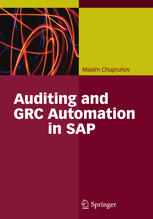

Most ebook files are in PDF format, so you can easily read them using various software such as Foxit Reader or directly on the Google Chrome browser.
Some ebook files are released by publishers in other formats such as .awz, .mobi, .epub, .fb2, etc. You may need to install specific software to read these formats on mobile/PC, such as Calibre.
Please read the tutorial at this link: https://ebookbell.com/faq
We offer FREE conversion to the popular formats you request; however, this may take some time. Therefore, right after payment, please email us, and we will try to provide the service as quickly as possible.
For some exceptional file formats or broken links (if any), please refrain from opening any disputes. Instead, email us first, and we will try to assist within a maximum of 6 hours.
EbookBell Team

5.0
68 reviewsOver the last few years, financial statement scandals, cases of fraud and corruption, data protection violations, and other legal violations have led to numerous liability cases, damages claims, and losses of reputation. As a reaction to these developments, several regulations have been issued: Corporate Governance, the Sarbanes-Oxley Act, IFRS, Basel II and III, Solvency II and BilMoG, to name just a few. In this book, compliance is understood as the process, mapped not only in an internal control system, that is intended to guarantee conformity with legal requirements but also with internal policies and enterprise objectives (in particular, efficiency and profitability).
The current literature primarily confines itself to mapping controls in SAP ERP and auditing SAP systems. Maxim Chuprunov not only addresses this subject but extends the aim of internal controls from legal compliance to include efficiency and profitability and then well beyond, because a basic understanding of the processes involved in IT-supported compliance management processes are not delivered along with the software. Starting with the requirements for compliance (Part I), he not only answers compliance-relevant questions in the form of an audit guide for an SAP ERP system and in the form of risks and control descriptions (Part II), but also shows how to automate the compliance management process based on SAP GRC (Part III). He thus addresses the current need for solutions for implementing an integrated GRC system in an organization, especially focusing on the continuous control monitoring topics.
Maxim Chuprunov mainly targets compliance experts, auditors, SAP project managers and consultants responsible for GRC products as readers for his book. They will find indispensable information for their daily work from the first to the last page. In addition, MBA, management information system students as well as senior managers like CIOs and CFOs will find a wealth of valuable information on compliance in the SAP ERP environment, on GRC in general and its implementation in particular.